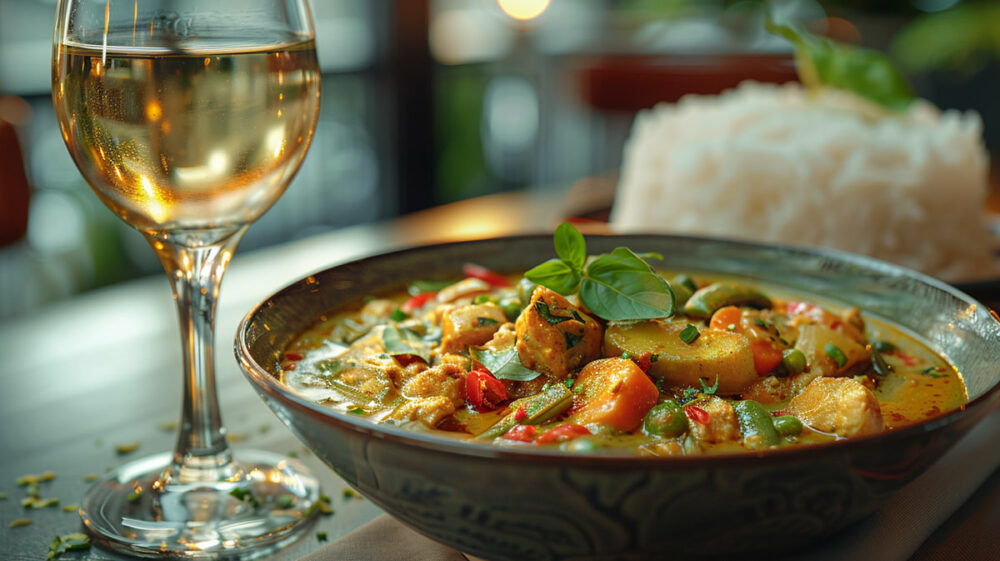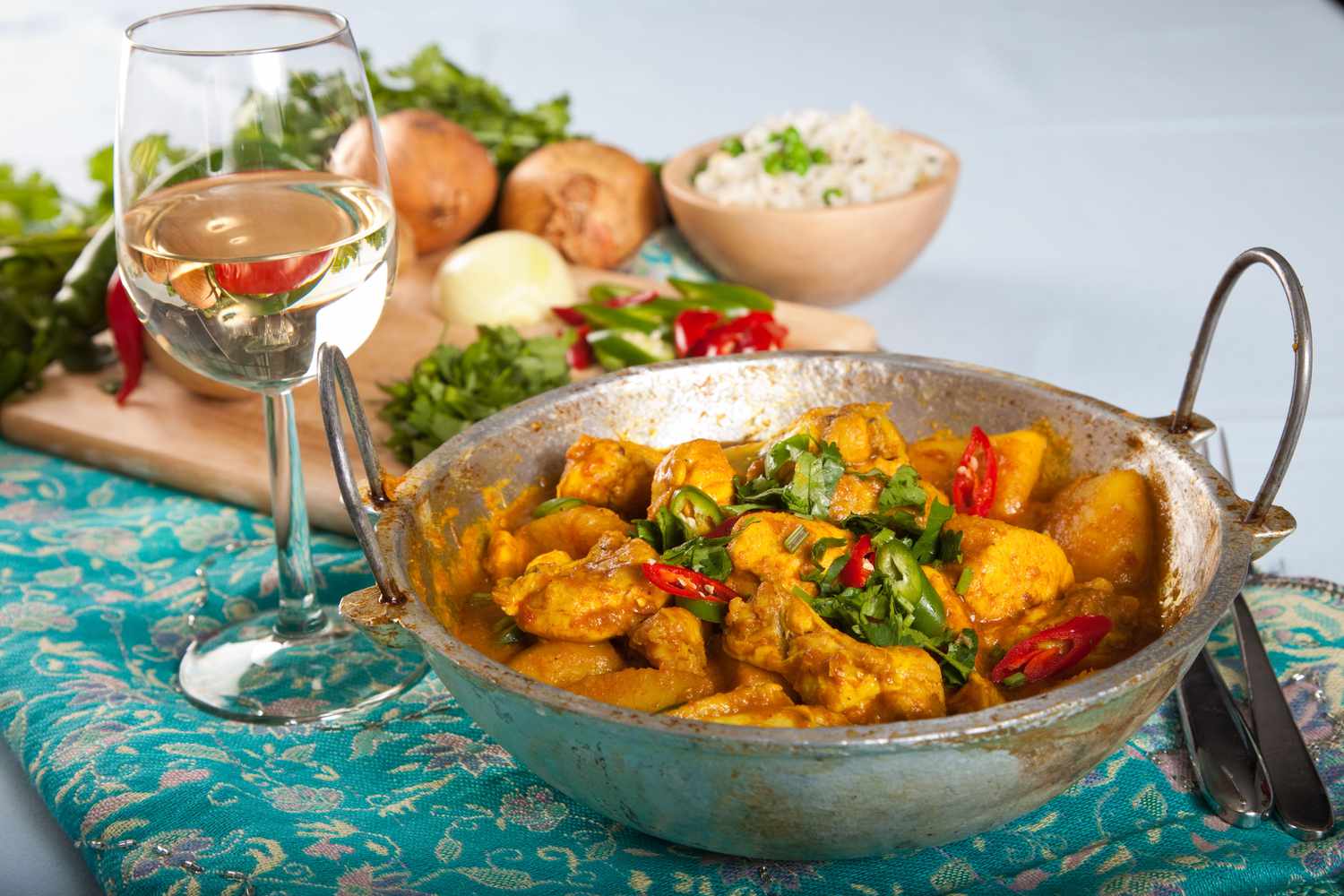Pairing wine with spicy Indian food might seem like uncharted territory, but it’s actually one of the most rewarding culinary adventures you can upon. The complex spice profiles, rich textures, and varying heat levels of Indian cuisine create unique opportunities for wine enthusiasts to explore unexpected flavor combinations that lift both the food and the wine to new heights.
The key to successful wine pairing with spicy Indian dishes lies in understanding how different wine characteristics interact with heat, spices, and rich sauces. Unlike traditional European cuisine pairings, Indian food demands a more nuanced approach that considers not just the protein or cooking method, but the intricate blend of spices, the level of heat, and the sauce consistency. The goal isn’t to overpower the spices but to create a harmonious balance where both the wine and food complement each other.
Many wine lovers mistakenly believe that spicy food and wine don’t mix, often defaulting to beer or soft drinks. However, the right wine can actually enhance the dining experience by cleansing the palate, cooling the heat, and bringing out subtle flavors that might otherwise be masked by the spice intensity. The secret lies in selecting wines with specific characteristics that work synergistically with Indian cuisine’s bold flavors.
Understanding the science behind spice and wine interaction is crucial for making informed pairing decisions. Alcohol can amplify the perception of heat, making spicy dishes seem even hotter, while certain wine components like acidity and residual sugar can provide cooling relief and flavor balance.
Understanding the Science of Spice and Wine

The interaction between wine and spicy food is rooted in how our taste buds and sensory receptors respond to different compounds. Capsaicin, the compound responsible for heat in chili peppers, creates a burning sensation that can be either intensified or soothed by wine components. High-alcohol wines tend to amplify spice perception, making dishes taste hotter than they actually are. This is why avoiding high-alcohol wines is crucial when pairing with fiery dishes like vindaloo or jalfrezi.
Tannins, the compounds that give red wines their structure and astringency, can clash dramatically with spices and exaggerate heat levels. This explains why heavily oaked or high-tannin wines like Cabernet Sauvignon or Nebbiolo often create an unpleasant experience when paired with spicy Indian food. The tannins interact with the capsaicin to create an intensified burning sensation that overwhelms the palate.
Conversely, acidity in wine serves as a natural palate cleanser, cutting through rich, oily curries and providing relief from heat. Wines with good acidity help digest creamy dishes while refreshing the palate between bites. Residual sugar in wine acts as a cooling agent, counterbalancing spice intensity and allowing the complex flavors of Indian dishes to shine through.
White Wine Champions for Spicy Indian Cuisine
Riesling: The Universal Spice Tamer
Riesling stands as the undisputed champion for pairing with spicy Indian food. Its naturally high acidity and potential for residual sweetness make it incredibly versatile across different spice levels. For milder dishes, a dry Riesling provides crisp acidity that complements the food without competing. For fiery dishes like vindaloo, an off-dry or sweet Riesling offers the perfect cooling effect while maintaining flavor complexity.
German Rieslings, particularly Kabinett or Spätlese styles, excel with dishes featuring intense heat and complex spice blends. The wine’s fruity sweetness counterbalances the fire while its acidity cleanses the palate, allowing diners to fully appreciate each dish’s nuanced flavors.
Gewürztraminer: The Aromatic Ally
Gewürztraminer’s distinctive lychee and rose petal aromatics create beautiful harmony with Indian spices. Its slight sweetness and pronounced acidity make it particularly effective with creamy dishes like chicken tikka masala or rich Goan fish curry. The wine’s aromatic intensity matches the complexity of Indian spice blends without being overwhelmed.
Grüner Veltliner: The Heat Neutralizer
This Austrian white wine offers exceptional versatility with spicy Indian cuisine. Its bright acidity tones down heat without overpowering the intricate spice flavors, making it particularly effective with dishes featuring coconut, vinegar, and abundant chili peppers. Grüner Veltliner’s herbal notes complement the earthy spices commonly used in Indian cooking.
Strategic Red Wine Selections

Fruit-Forward, Low-Tannin Options
While white wines dominate Indian food pairings, certain red wines can create exceptional combinations when chosen carefully. The key is selecting fruit-forward wines with soft tannins and moderate alcohol levels. Gamay wines, particularly Cru Beaujolais, offer bright fruit flavors and low tannins that complement rather than compete with spicy dishes.
Malbec for Garam Masala Dishes
Malbec pairs beautifully with lamb dishes featuring garam masala, where the wine’s rich fruit flavors complement the warm spice blend. However, it’s crucial to choose lower-alcohol Malbecs when chili heat is present, as higher alcohol levels will intensify the spice perception.
Syrah and Shiraz Considerations
Medium-bodied Syrah or Shiraz can work well with meat-heavy Indian dishes, particularly those with smoky tandoori flavors. These wines’ spice notes and moderate tannins create interesting flavor bridges with Indian cuisine, though they’re best reserved for dishes with moderate rather than extreme heat levels.
Regional Indian Cuisine Pairing Strategies
North Indian Richness
North Indian cuisine’s creamy gravies and tandoori preparations pair excellently with fruity white wines like Riesling or lightly chilled Pinot Noir. The richness of butter chicken and korma dishes benefits from wines with good acidity that can cut through the cream while complementing the aromatic spices.
South Indian Heat and Tang
South Indian cuisine’s fiery curries and tangy chutneys require wines that can handle intense heat while complementing bright, bold flavors. Light, refreshing wines like Sauvignon Blanc or sparkling wines provide the necessary cooling effect while their zesty character matches the cuisine’s vibrant profile.
Coastal Seafood Specialties
Coastal Indian dishes featuring coconut milk and fresh seafood pair beautifully with crisp, dry white wines. Chardonnay or Chenin Blanc complement the creaminess of coconut while their freshness enhances seafood flavors without overwhelming delicate preparations.
Expert Pairing Tips and Techniques

Temperature Considerations
Serving wine at the proper temperature becomes even more critical when pairing with spicy food. Slightly chilled red wines can provide additional cooling relief while maintaining their flavor profile. White wines should be well-chilled but not ice-cold, as extreme cold can mute the wine’s ability to complement complex spice flavors.
Glassware and Service
Using appropriate glassware enhances the pairing experience by concentrating aromatics and allowing proper wine aeration. Smaller pours are often preferable with spicy food, as the wine serves more as a palate refresher than a primary beverage.
Progressive Pairing Strategy
When enjoying multiple Indian dishes with varying spice levels, start with milder wines and progress to those with more residual sugar or cooling properties as the heat intensifies throughout the meal.
Mastering wine pairings with spicy Indian food opens up a world of culinary possibilities that enhance both the dining experience and appreciation for these complex flavor profiles. By understanding the science behind spice and wine interaction, selecting appropriate wine styles, and applying strategic pairing principles, you can create memorable combinations that celebrate the best of both traditions.


